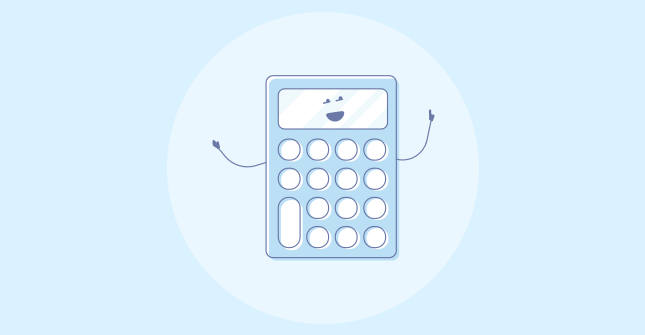
Qualaroo is a tool that allows you to gather insights from your users. But you can also use it to recruit participants for user research!
This article details a few examples of how Qualaroo can help you recruit participants for your UX research, experiments, interviews, and other feedback campaigns from people who visit your website and/or use your product. We’ll review relevant nudge compositions, targeting, and suggested combinations of the two with these examples.
The Qualaroo nudge provides the question and logic structure you need for any use case. Here are a few ways you can structure the nudge to help you recruit user research. Not familiar with how the nudge works? Take a look at this help article for an overview of its functionality.
Keep reading to see examples of how to use the nudge to recruit participants for your user research!
Option 1: CTA Message Screen
This option leverages the power of Qualaroo and your calendar so that your users can schedule time directly with you.
- Select the verbiage you require to prompt your users to meet with you, and choose the radio button answer option with Yes and No as your options.
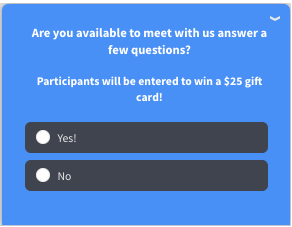
2a. If they answer Yes, present them with a Message screen containing a Call-to-Action button that links them to your calendar.
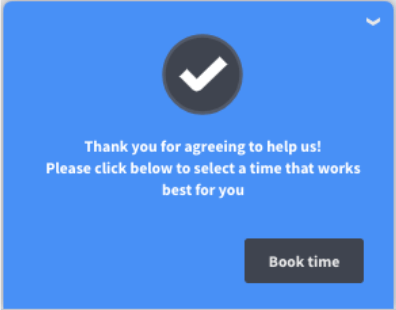
2b. If they answer No, send them to a Message screen that says “Thank you”
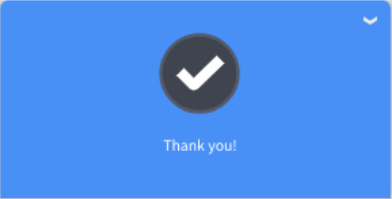
Option 2: URL Redirect
Similarly to option 1, this composition leverages the power of Qualaroo and your calendar to allow visitors to schedule time directly with you, but with one less step.
- Prompt your users to meet with you, and use radio select to allow users to select Yes or No.
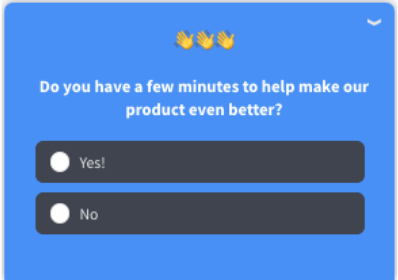
2a. If they answer Yes, select the next step to automatically redirect them to your calendar link.
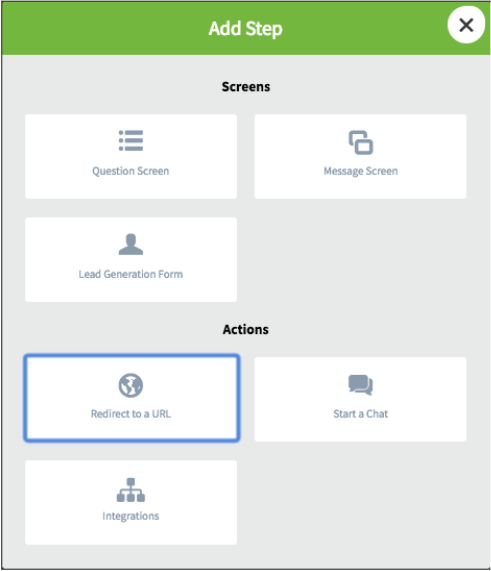
2b. If they answer No, send them to a Message screen that says “Thank you”
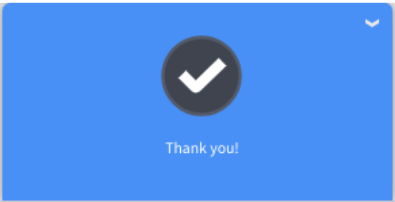
Option 3: Lead Generation Form
Capture the user’s contact information and follow up with them at a later date.
- Prompt users to indicate whether or not they are willing to meet with you, and select a radio button answer option indicating Yes or No.
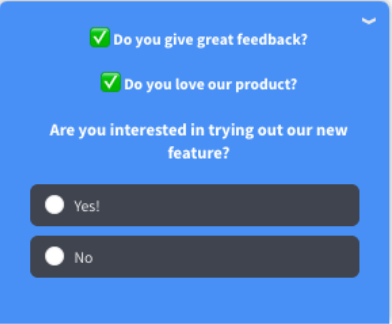
2a. If they answer Yes, present a Lead Generation form asking for their contact information.
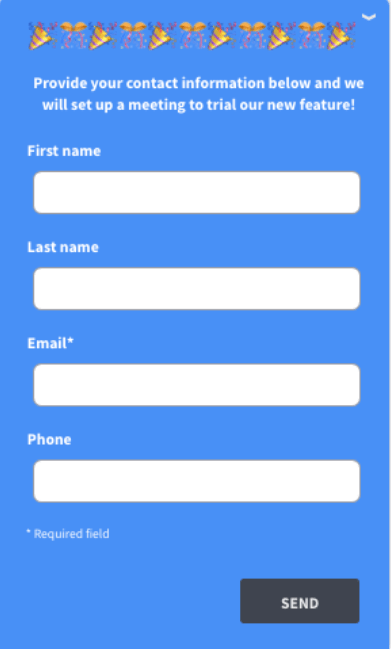
2b. If they answer No, display a “Thank you” message.
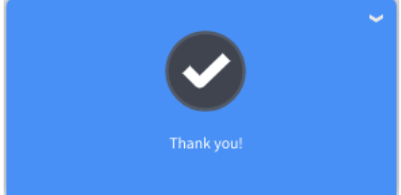
Alternatively, begin with the Lead Generation form and ask all users that are interested in participating to fill in their information.
Targeting Parameter examples:
Once you have determined how to present your nudge, specify your audience and where you will reach them.
Example 1: Targeting your homepage or all pages of your website
You can leverage Simple URL Targeting to ask users on your homepage or your entire site to provide feedback. We recommend this approach to target your entire population. We’ll use the Qualaroo site for the purposes of demonstrating this example. Select qualaroo.com if you want to target only your home page, or qualaroo.com/* if you want to target your entire site.

Suggested nudge composition pairing: Composition Examples 1, 2, and 3
All three composition examples can apply here based on your needs. For situations where you are targeting users before a login wall, we recommend example 3. A Lead Generation Form can help you obtain information from any user, and can come in handy in situations where you might not already know the identity of your users because they are not being reached behind a login wall.
Example 2: Targeting specific locations of your website
In this example, you can use Advanced URL Targeting to ask users who are engaging with particular features or sections of your website. This method is especially helpful for recruiting relevant users to provide feedback around your specific features or offerings and avoid users who do not utilize these. For example, if you are interested in recruiting users who are using your Sentiment Analysis functionality, target the path sentiment/analysis, or all paths after.

Suggested nudge option pairing: Options 1 and 2
We suggest examples 1 and 2 based off of the assumption that your users who are using a particular feature or service are already signed up, and you already have their contact information. However, if the intended location is not behind a login wall, meaning the people you are targeting are just visitors, not registered users, feel free to proceed with example 3 if you also want to collect their contact information.
Example 3: Targeting specific users based on user attributes or personas
In this example, we’ll use Custom Property targeting to identify and recruit users who fit a persona or particular set of attributes that you determine. This approach is powerful for attracting participants who fit a specific type of usage, service tier, or match other relevant characteristics. Use this targeting technique in conjunction with Advanced URL targeting to ensure that you recruit your participants at the right time.
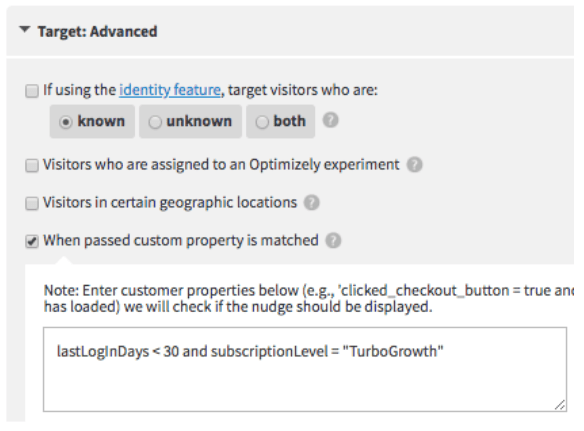
Suggested nudge option pairing: Option 1 and 2
We suggest examples 1 and 2 because these users will most certainly be behind a login wall, and asking for contact information may be redundant. Even if a user were to select “Yes” but not book time on your calendar, their response will still populate with the values for each of the custom properties you set. Taking it one step further, leveraging the Identity API will allow each response to populate with their email address or user ID, which will, in turn, allow you to follow up and confirm whether or not they are truly interested in participating.
Example 4: Targeting users based on their login status, or a list of specific users who fit your participant criteria
In this example, you can leverage the Identity API feature to track the identity of each of your users behind the login wall, or to visitors only (who are not logged in). With the Identity API enabled, you will also have the ability to target or ignore a list of users to recruit. This is also known as Whitelisting or Blacklisting. As mentioned above, this feature will also ensure each response populates with the user’s Identity information.
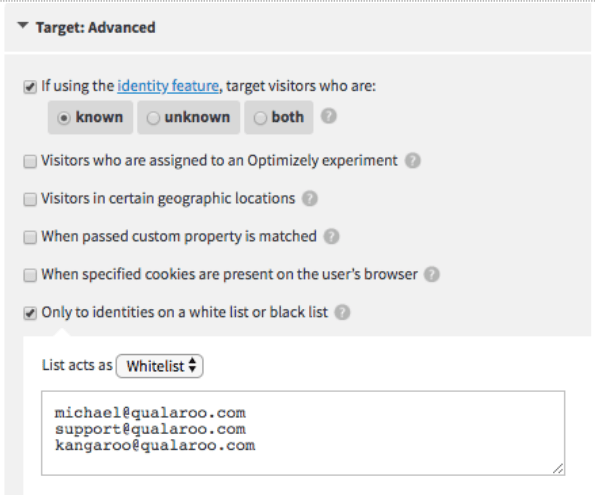
Suggested nudge option pairing: Options 1, 2, and 3
The ideal composition is strictly related to whether or not you are targeting users behind your login wall. If you are targeting users in front of the login wall, use example 3. If you are targeting behind the login wall, utilize examples 1 and 2.
These methods are excellent for setting up interviews to gather unbiased feedback on your prototype, UX design, and much more! If there is a use case that you would like to see or have any questions, please feel free to reach out to us at support@qualaroo.com!
Want insights that improve experience & conversions?
Capture customer feedback to improve customer experience & grow conversions.

